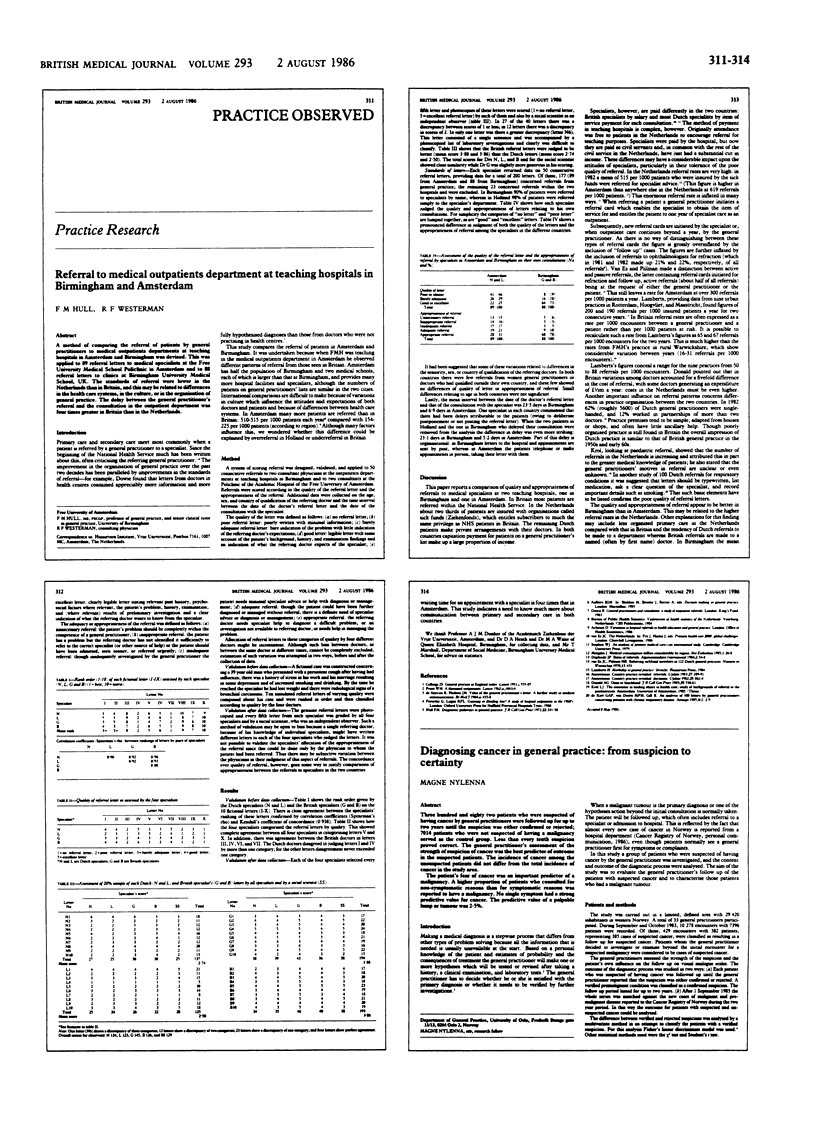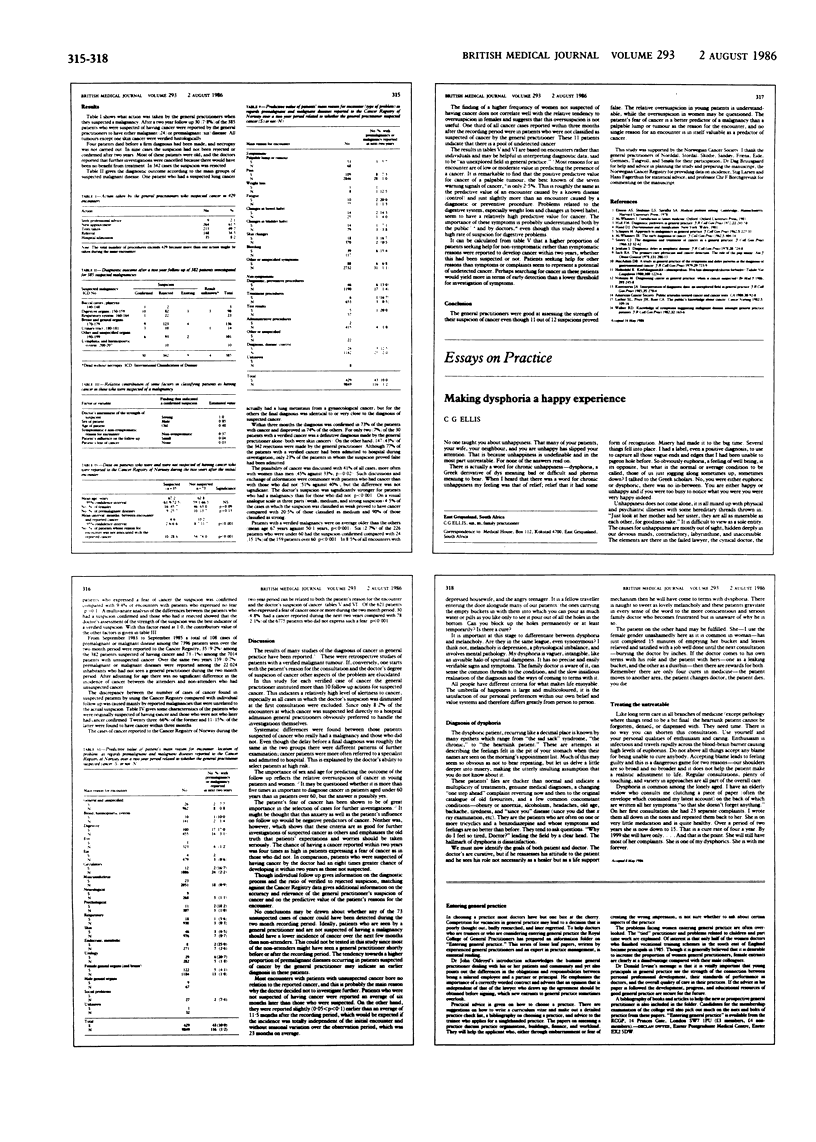Abstract
Three hundred and eighty two patients who were suspected of having cancer by general practitioners were followed up for up to two years until the suspicion was either confirmed or rejected; 7014 patients who were not suspected of having a malignancy served as the control group. Less than every tenth suspicion proved correct. The general practitioner's assessment of the strength of suspicion of cancer was the best predictor of outcome in the suspected patients. The incidence of cancer among the unsuspected patients did not differ from the total incidence of cancer in the study area. The patient's fear of cancer was an important predictor of a malignancy. A higher proportion of patients who consulted for non-symptomatic reasons than for symptomatic reasons was reported to have a malignancy. No single symptom had a strong predictive value for cancer. The predictive value of a palpable lump or tumour was 2.5%.
Full text
PDF



